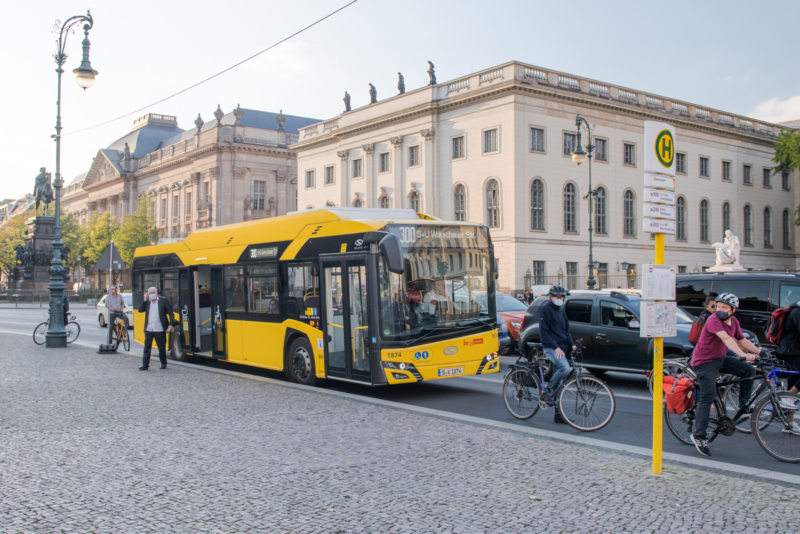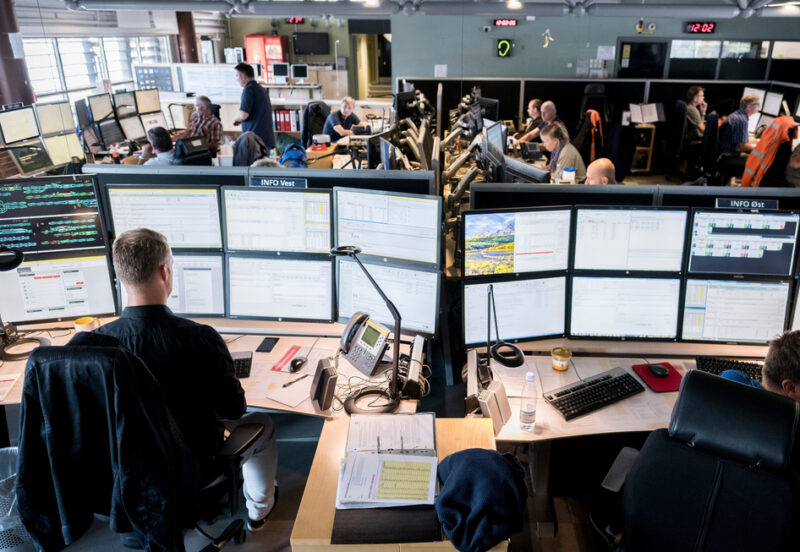InnoTrans 2024: Navigating the Future of Public Transport through Innovation
In September 2024, the vibrant city of Berlin hosted the InnoTrans 2024 convention from the 24th to the 27th, bringing together industry leaders, experts, and stakeholders at the International Bus Forum. The forum tackled pressing topics surrounding the public bus industry, emphasizing the pivotal developments and challenges as it strives to leverage new technologies for more efficient and user-friendly services.
Image Credit: © a2b Global Media
The Focus on AI in Transportation
One of the key highlights of InnoTrans 2024 was the spotlight on artificial intelligence (AI), marking its importance in shaping more efficient, sustainable, and passenger-centric transport solutions. The integration of AI solutions, ranging from route optimization to enhanced passenger services, was identified as crucial. However, a cautionary note echoed through the discussions regarding the pace of technological adoption relative to the current capabilities of the industry.
Prioritizing Functionality Over Excess
Johannes Wieczorek, the Permanent Secretary for Urban Mobility and Transport in Berlin, made a crucial point about prioritizing functionality and simplicity over the rapid introduction of new technologies. His sentiment was echoed by Dr. Rolf Erfurt, COO of Berliner Verkehrsbetriebe (BVG), emphasizing a need for stability. "We must provide stability prior to performing open heart surgery," he remarked, hinting at the balance needed between innovation and operational consistency.
Transitioning to Zero-Emission Vehicles
As the bus industry transitions toward zero-emission vehicles, the conversation around vehicle availability and service reliability became paramount. While BVG demonstrated stable service levels with both electric and diesel buses, challenges remain, particularly regarding fire safety in electric vehicles and ensuring that these innovations meet passenger needs.

Image Credit: © BVG
Innovation: A Means to Address Challenges
Christoph Ziegenmeyer, VP of Communications at MOIA, highlighted that customers require reliable, real-time information during their journeys. The call for accessible data is evident, leading to an increased emphasis on digital solutions that can collect, analyze, and convey essential information effectively. As Joris D’Incà, a partner in Oliver Wyman’s Transportation practice, succinctly put it: "Innovation will become more important as big challenges in the future can only be solved by technological innovations."
Aligning Innovations with Real-time Needs
To truly harness the power of innovation, industry advancements must align with the challenges faced by companies. Regulatory timelines and suitable implementation strategies are imperative. Failure to execute innovations timely can lead to misalignment, detracting from industry goals. Wieczorek stated the necessity for robust, practical innovations that can be seamlessly integrated into existing systems, allowing users to adopt them comfortably.
Embracing Simple Yet Effective Solutions
Innovations that enhance stability often stem from straightforward yet efficient concepts. Wieczorek noted the Lightgate feature on trains, which alerts passengers to the occupancy of carriages, thereby enhancing the overall travel experience without complicating standard operations.
Learning from Successful Implementations
Erfurt advocated for the replication of successful solutions rather than reinventing the wheel. This approach not only minimizes risk but also opens up opportunities for joint ventures across transport networks, fostering consistency and reliability for passengers.
The Model City Approach
Thomas Wolf, COO at Siemens Mobility’s Hacon, emphasized the strategic advantage of using certain locations as model cities for trials, ensuring optimal resource allocation and successful preliminary rollouts before wider adaptation.
The Road Ahead: Autonomous Driving Technology
While groundbreaking technologies like autonomous driving enterprise extensive testing and development phases, the promise they hold to address issues such as driver shortages is undeniable. It’s essential that investment in these transformative technologies is approached collaboratively and strategically to maximize potential benefits while mitigating risks.
Ensuring Passenger Acceptance
A successful public transport network hinges on encouraging passenger acceptance of new technologies. Understanding these demands is crucial, particularly as digitalization trends evolve. For example, contactless payments have faced resistance in Germany, where approximately 60% of transactions remained in cash due to cultural factors, including data privacy concerns.
Adopting Smart Payment Solutions
BVG has effectively eliminated cash payments on buses, streamlined boarding procedures, and optimized workforce allocation due to advances sparked by the pandemic. Such systems allow for reallocation of resources and savings that can be reinvested into enhancing service quality.
Internal Operations Transformed
Innovation isn’t limited to customer-facing technologies; it’s also redefining internal operations like fleet management and scheduling. Bastian Dittbrenner, Managing Director at IVU Traffic Technologies, outlined how integrated IT systems can transform resource planning, especially against the backdrop of workforce shortages.

Image Credit: © IVU Traffic Technologies
Data-Driven Network Planning
Software innovations are paving the way for informed network planning decisions. Georg Polzer, co-founder and CEO of Teralytics, discussed leveraging data analytics to assess commuter patterns, which allows for tailoring services to meet demand effectively, as demonstrated in recent studies revealing commuter needs on Sundays.
The Power of Digital Twins
Polzer also highlighted the significance of digital twins—virtual replicas that permit operators to simulate impacts of modifications, such as adjusted bus routes. This capability facilitates data-informed decision-making, enhancing both efficiency and rider satisfaction.
Gradual Implementation for Successful Adoption
Dittbrenner emphasized the importance of gradual implementation of these technologies to ensure operators are well-versed in their systems and capable of maximizing the associated data benefits, paving the way for a smoother transition.
Braving the Future: Conclusions
Discussions at the International Bus Forum during InnoTrans 2024 underscored a delicate balance. The industry is at the threshold of significant transition toward electric fleets while simultaneously catering to evolving passenger demands. Embracing technological advances in public transportation is essential, but it must be executed in a way that promotes continuity and does not disrupt current operations.
Through collaboration among operators, consistent communication with passengers, and prioritizing scalable implementations, the public transport sector can pave the way for a robust future. By strategically integrating innovations—both simple and complex—the industry can address existing challenges while preparing for the needs of tomorrow’s passengers, ultimately transforming the landscape of public transportation for the better.







